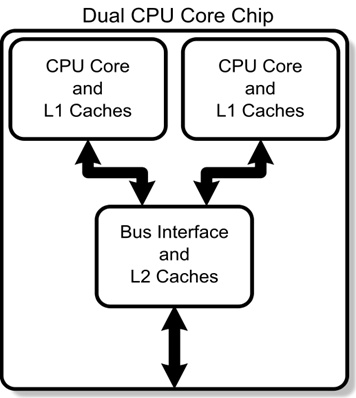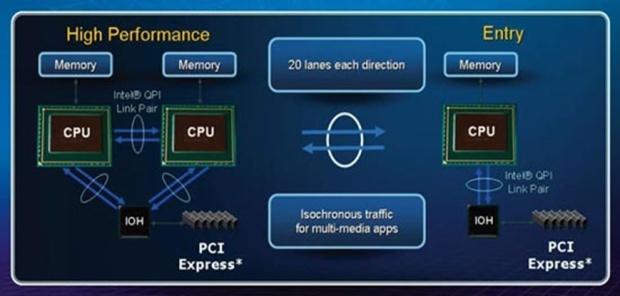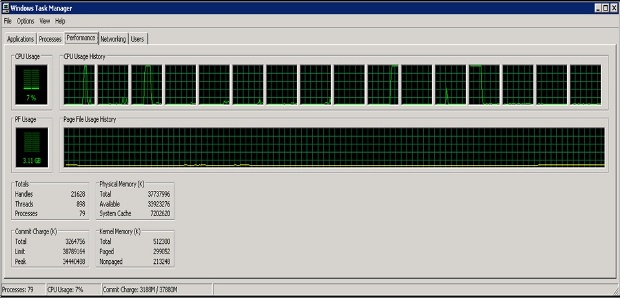Optimizing compiler. Auto parallelization
Multicore and multiprocessor is de facto standard
The presentation can be downloaded here.
Intel® Pentium® Processor Extreme Edition (2005-2007)
Intel® Xeon® Processor 5100, 5300 Series
Intel® Core™2 Processor Family (2006-)
Intel® Xeon® Processor 5200, 5400, 7400 Series
Intel® Core™2 Processor Family (2007-)
2-4 processors, up to 6 cores
Intel® Atom™ Processor Family (2008-)
Energy Efficiency has high priority
Intel® Core™i7 Processor Family (2008-)
Hyperthreading technology. System with non-uniform memory access.
CPU core is a complete computer system that shares some of the processing resources with other cores
Multiprocessor systems are
- Massively parallel computers or systems with distributed memory (MPP systems).
- Shared memory systems (SMP systems)
- Systems with non-uniform memory access (NUMA)
Instability of the application performance on multiprocessor machines with non-uniform memory access.
OS periodically moves application from one core to another with different access speed to the memory used.
Pros and cons of the multi-threaded applications
- + +:
- - -:
- Conclusion:
Auto parallelization is a compiler optimization which automatically converts sequential code into multi-threaded in order to utilize multiple cores simultaneously. The purpose of the automatic parallelization is to free programmer from the difficult and tedious manual parallelization.
/Qparallel
enable the auto-parallelization to generate multi-threaded code for loops that can be safely executed in parallel



